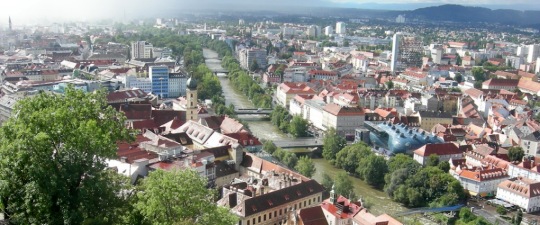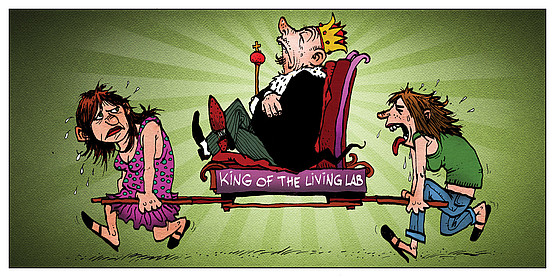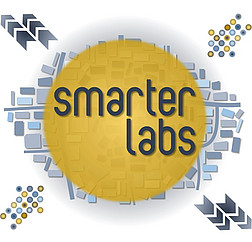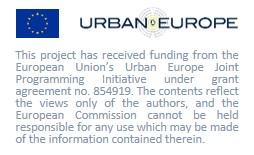#4 SOCIAL INCLUSION | Existing power structures are reproduced inside the Living Lab
THE CONSTRAINT
One fundamental aim of Living Labs is to involve citizens and establish a democratic structure that guarantees that every voice is heard and taken into account. However, in practice, instead of achieving real participation, various circumstances can lead to a mere reproduction of existing power structures inside a Living Lab. For example, if the city Mayor joins Living Lab meetings, his vision and proposals might end up dominating and conditioning Living Lab outcomes. Similarly, the position of a technical expert might be given more weight than that of laypeople. Gender also often influences group dynamics, with men taking more often a central position.
This can be the result of deliberate management in the Living Lab, if it is only run as an alibi activity. On the other hand, Living Lab organizers might not be aware of the heterogeneity of stakeholders and of the importance of taking the right precautions to guarantee any group or participant equal opportunities for participating in the discussion.

WAYS TO ANTICIPATE
→ Regularly perform a stakeholder group dynamics analysis, in order to understand group structure and leadership relations among group members
→ Particularly, identify any dominant position among Living Lab participants, due to already existing institutional roles outside the Living Lab (political responsibility, lobbying activity)
→ Design a communication and management strategy to address all identified target groups, keep flexibility, favor development of activities along different tracks, allowing each group to adapt to their
speed of progress
To avoid reproducing existing power structures, as a first step, these need to be assessed by carrying out a group dynamics analysis, in order to understand group structure and leadership relations among group members.
Particularly, it is important to identify any dominant position among Living Lab participants, which could be due to already existing institutional roles, such as political responsibilities, lobbying or expertise. If people in such positions attend Living Lab activities, their ideas should be given no more attention than those of the other citizens without a leading societal role.
The Living Lab organizers have to design a communication and management strategy to address all identified target groups, applying tailor-made methods for each of them. To ensure fair and equal participation, flexibility in the use of methods is a key requirement (e.g. not only conversation or only ICT tools). Inviting people at various levels and occasions and building trust and social cohesion plays an important role for a long-term success of a Living Lab. Organizers should facilitate development of activities along different tracks and allow each group to adapt to their speed of progress: equal opportunities are often the result of different – not identical – processes. In general, group facilitation techniques help guarantee that everybody is engaged and contribute to a good learning and planning process. Next to the methodology, also the locations should contribute to setting a plain ground. For example, if city representatives actively participate in Living Lab activities, meeting at the city hall might indirectly reinforce existing power structures, involuntary putting hosts in a dominant position. Meeting in places such as schools, or maybe changing locations over time, helps counter-balancing existing power structures.
STORIES FROM “SMARTER LABS”

Graz
The City of Graz aimed to take action in a district with challenging circumstances: high proportion of migrants, various cultures and ethnics, education levels and incomes below average. Reaching out to marginalized groups such as migrants, elderly people and children turned out to be difficult. At events organized by the Living Lab, the people who showed up represented an incomplete sample of the actual target group. Even more so, a couple of persons repeatedly “sabotaged” events by excessively raising their voices and acting as opinion leaders.
The Living Lab in Graz involved a lot of stakeholders including residents, shop owners, bus operators, city entities and politicians. All of them filled out certain roles that contained different levels of power. The Living Lab organizers aimed to blur the borders between them, enabling each person to participate equally. This was achieved by offering different formats of Living Lab activities: online questionnaires, workshops, social safaris, mental maps, etc. By repeatedly offering possibilities for stakeholders to participate and actively approaching them over an extended period of time, also marginalized social groups (e.g. migrants) were included. Locations of events were carefully selected. In particular, a city district office was installed next to Griesplatz and was used as a neutral place for diverse activities throughout the whole project duration, complemented by outdoor activities in the district, literally bringing the Living Lab to the people. These measures created awareness for the Living Lab and social cohesion among the people involved.
Maastricht
In Maastricht, the university (i.e. a relative outsider) arranged the invitations and facilitation of the visioning workshops, whilst treating the municipality as just one of the six stakeholder groups (others were: entrepreneurs, mobility operators, and three types of residents/travelers). All groups made their own vision and these were presented and discussed as equivalent outputs. A facilitator was present at each of the six tables to manage the discussion among very different types of people and make sure everyone was included in the discussion. In the post-interviews all participants stressed they felt they could express themselves well. The municipality enjoyed their freer role as participant and not being the facilitator. No one mentioned (s)he felt overruled by another group.



